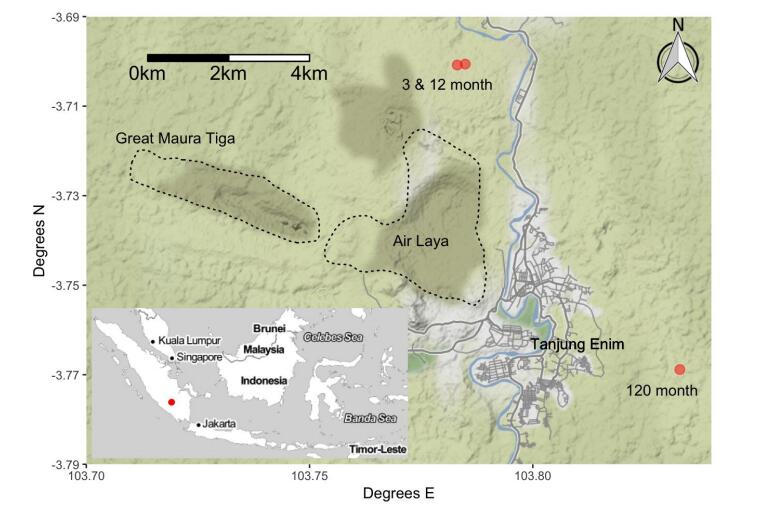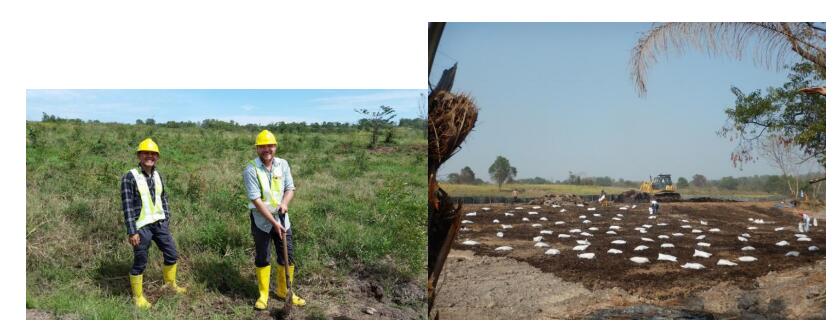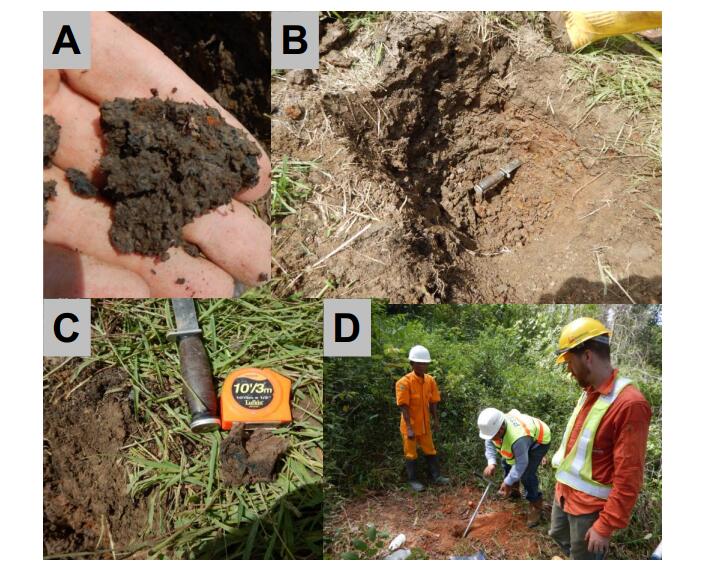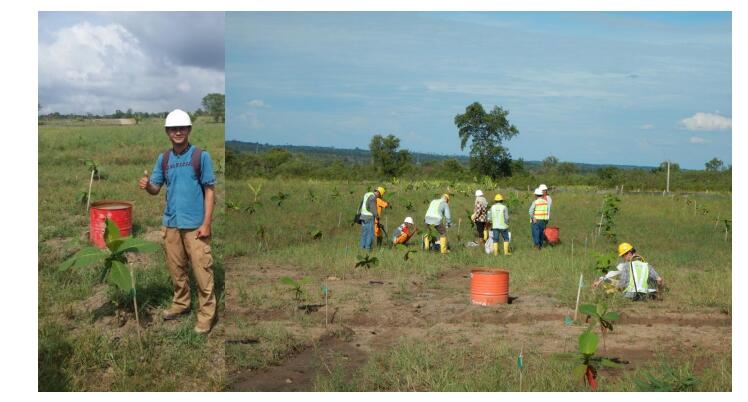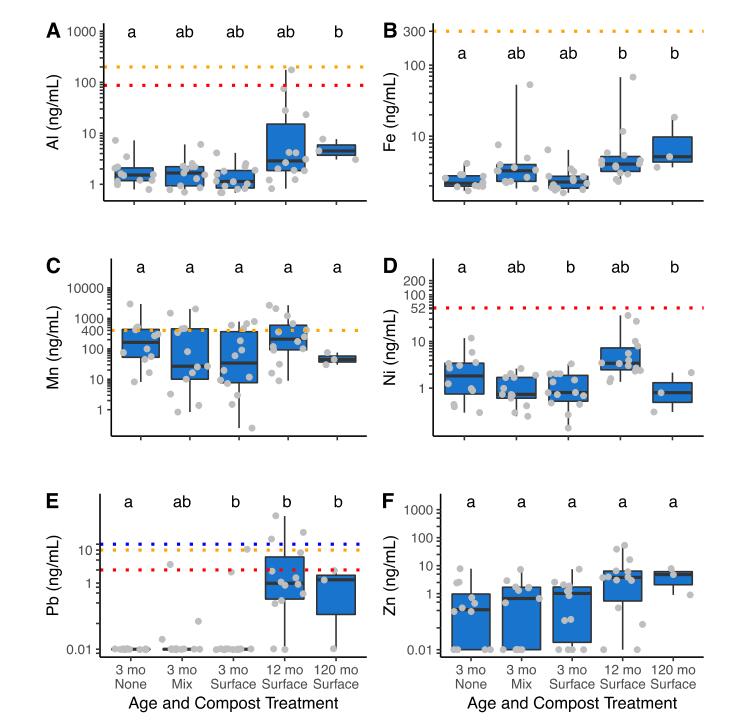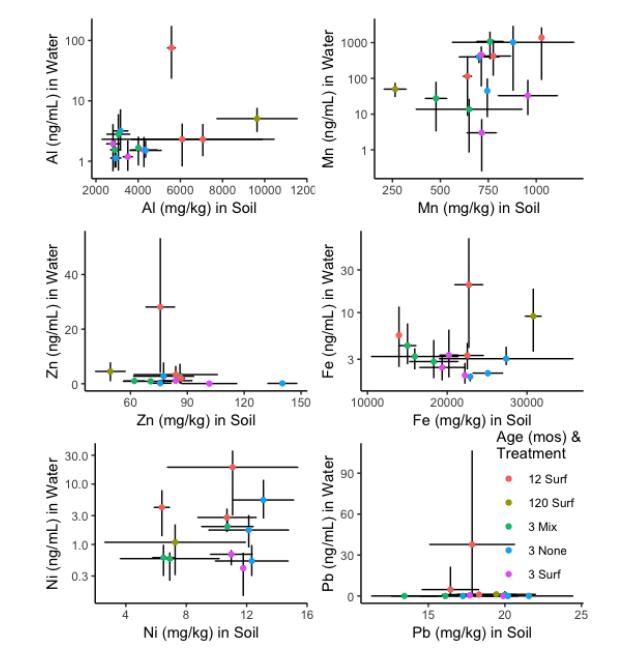| 1.
|
R. Scardaci, F. Varese, M. Manfredi, E. Marengo, R. Mazzoli, E. Pessione,
Enterococcus faecium NCIMB10415 responds to norepinephrine by altering protein profiles and phenotypic characters,
2021,
231,
18743919,
104003,
10.1016/j.jprot.2020.104003
|
|
| 2.
|
Beatriz Sabater-Muñoz, Christina Toft,
2020,
Chapter 3,
978-3-030-51848-6,
77,
10.1007/978-3-030-51849-3_3
|
|
| 3.
|
Constance J. Jeffery,
An enzyme in the test tube, and a transcription factor in the cell: Moonlighting proteins and cellular factors that affect their behavior,
2019,
0961-8368,
10.1002/pro.3645
|
|
| 4.
|
Adriana Espinosa-Cantú, Erika Cruz-Bonilla, Lianet Noda-Garcia, Alexander DeLuna,
Multiple Forms of Multifunctional Proteins in Health and Disease,
2020,
8,
2296-634X,
10.3389/fcell.2020.00451
|
|
| 5.
|
Patrick Di Martino,
Bacterial adherence: much more than a bond,
2018,
4,
2471-1888,
563,
10.3934/microbiol.2018.3.563
|
|
| 6.
|
Lidia Muscariello, Barbara De Siena, Rosangela Marasco,
Lactobacillus Cell Surface Proteins Involved in Interaction with Mucus and Extracellular Matrix Components,
2020,
77,
0343-8651,
3831,
10.1007/s00284-020-02243-5
|
|
| 7.
|
Haipeng Liu, Constance J. Jeffery,
Moonlighting Proteins in the Fuzzy Logic of Cellular Metabolism,
2020,
25,
1420-3049,
3440,
10.3390/molecules25153440
|
|
| 8.
|
Dorota Satala, Justyna Karkowska-Kuleta, Aleksandra Zelazna, Maria Rapala-Kozik, Andrzej Kozik,
Moonlighting Proteins at the Candidal Cell Surface,
2020,
8,
2076-2607,
1046,
10.3390/microorganisms8071046
|
|
| 9.
|
Constance J. Jeffery,
Multitalented actors inside and outside the cell: recent discoveries add to the number of moonlighting proteins,
2019,
47,
0300-5127,
1941,
10.1042/BST20190798
|
|
| 10.
|
Bruna Gonçalves, Nuno Azevedo, Hugo Osório, Mariana Henriques, Sónia Silva,
Revealing Candida glabrata biofilm matrix proteome: global characterization and pH response,
2021,
478,
0264-6021,
961,
10.1042/BCJ20200844
|
|
| 11.
|
Amy L. Bottomley, Elizabeth Peterson, Gregory Iosifidis, Adeline Mei Hui Yong, Lauren E. Hartley-Tassell, Shirin Ansari, Chris McKenzie, Catherine Burke, Iain G. Duggin, Kimberly A. Kline, Elizabeth J. Harry,
The novel E. coli cell division protein, YtfB, plays a role in eukaryotic cell adhesion,
2020,
10,
2045-2322,
10.1038/s41598-020-63729-7
|
|
| 12.
|
Jana Al Azzaz, Alissar Al Tarraf, Arnaud Heumann, David Da Silva Barreira, Julie Laurent, Ali Assifaoui, Aurélie Rieu, Jean Guzzo, Pierre Lapaquette,
Resveratrol Favors Adhesion and Biofilm Formation of Lacticaseibacillus paracasei subsp. paracasei Strain ATCC334,
2020,
21,
1422-0067,
5423,
10.3390/ijms21155423
|
|
| 13.
|
Enrica Pessione,
The Russian Doll Model: How Bacteria Shape Successful and Sustainable Inter-Kingdom Relationships,
2020,
11,
1664-302X,
10.3389/fmicb.2020.573759
|
|
| 14.
|
Ying Chen, Lan Yao, Yunsheng Wang, Xiaohan Ji, Zhan Gao, Shicui Zhang, Guangdong Ji,
Identification of ribosomal protein L30 as an uncharacterized antimicrobial protein,
2021,
120,
0145305X,
104067,
10.1016/j.dci.2021.104067
|
|
| 15.
|
Marta Bottagisio, Pietro Barbacini, Alessandro Bidossi, Enrica Torretta, Elinor deLancey-Pulcini, Cecilia Gelfi, Garth A. James, Arianna B. Lovati, Daniele Capitanio,
Phenotypic Modulation of Biofilm Formation in a Staphylococcus epidermidis Orthopedic Clinical Isolate Grown Under Different Mechanical Stimuli: Contribution From a Combined Proteomic Study,
2020,
11,
1664-302X,
10.3389/fmicb.2020.565914
|
|
| 16.
|
Guolin Cai, Dianhui Wu, Xiaomin Li, Jian Lu,
Levan from Bacillus amyloliquefaciens JN4 acts as a prebiotic for enhancing the intestinal adhesion capacity of Lactobacillus reuteri JN101,
2020,
146,
01418130,
482,
10.1016/j.ijbiomac.2019.12.212
|
|
| 17.
|
Chang Chen, Constance Jeffery,
2019,
Chapter 13,
978-3-030-23157-6,
269,
10.1007/978-3-030-23158-3_13
|
|
| 18.
|
Dorota Satala, Grzegorz Satala, Justyna Karkowska-Kuleta, Michal Bukowski, Anna Kluza, Maria Rapala-Kozik, Andrzej Kozik,
Structural Insights into the Interactions of Candidal Enolase with Human Vitronectin, Fibronectin and Plasminogen,
2020,
21,
1422-0067,
7843,
10.3390/ijms21217843
|
|
| 19.
|
Natayme Rocha Tartaglia, Aurélie Nicolas, Vinícius de Rezende Rodovalho, Brenda Silva Rosa da Luz, Valérie Briard-Bion, Zuzana Krupova, Anne Thierry, François Coste, Agnes Burel, Patrice Martin, Julien Jardin, Vasco Azevedo, Yves Le Loir, Eric Guédon,
Extracellular vesicles produced by human and animal Staphylococcus aureus strains share a highly conserved core proteome,
2020,
10,
2045-2322,
10.1038/s41598-020-64952-y
|
|
| 20.
|
Yanina Lamberti, Kristin Surmann,
The intracellular phase of extracellular respiratory tract bacterial pathogens and its role on pathogen-host interactions during infection,
2021,
34,
0951-7375,
197,
10.1097/QCO.0000000000000727
|
|
| 21.
|
Wanderson Marques da Silva, Nubia Seyffert, Artur Silva, Vasco Azevedo,
A journey through the Corynebacterium pseudotuberculosis proteome promotes insights into its functional genome,
2021,
9,
2167-8359,
e12456,
10.7717/peerj.12456
|
|
| 22.
|
Mahalingam Srinivasan, Subramanian Muthukumar, Durairaj Rajesh, Vinod Kumar, Rajamanickam Rajakumar, Mohammad Abdulkader Akbarsha, Balázs Gulyás, Parasuraman Padmanabhan, Govindaraju Archunan,
The Exoproteome of Staphylococcus pasteuri Isolated from Cervical Mucus during the Estrus Phase in Water Buffalo (Bubalus bubalis),
2022,
12,
2218-273X,
450,
10.3390/biom12030450
|
|
| 23.
|
A. Paula Domínguez Rubio, Cecilia L. D’Antoni, Mariana Piuri, Oscar E. Pérez,
Probiotics, Their Extracellular Vesicles and Infectious Diseases,
2022,
13,
1664-302X,
10.3389/fmicb.2022.864720
|
|
| 24.
|
Fei Hao, Xing Xie, Zhixin Feng, Rong Chen, Yanna Wei, Jin Liu, Qiyan Xiong, Guoqing Shao, Johnson Lin,
NADH oxidase of Mycoplasma hyopneumoniae functions as a potential mediator of virulence,
2022,
18,
1746-6148,
10.1186/s12917-022-03230-7
|
|
| 25.
|
Xia Liu, Ting Luan, Wanqing Zhou, Lina Yan, Hua Qian, Pengyuan Mao, Lisha Jiang, Jingyan Liu, Can Rui, Xinyan Wang, Ping Li, Xin Zeng, Denise Monack,
The Role of 17β-Estrogen in Escherichia coli Adhesion on Human Vaginal Epithelial Cells via FAK Phosphorylation,
2021,
89,
0019-9567,
10.1128/IAI.00219-21
|
|
| 26.
|
Pramod Yadav, Raja Singh, Souvik Sur, Sandhya Bansal, Uma Chaudhry, Vibha Tandon,
Moonlighting proteins: beacon of hope in era of drug resistance in bacteria,
2023,
49,
1040-841X,
57,
10.1080/1040841X.2022.2036695
|
|
| 27.
|
Teresa Requena, Gaspar Pérez Martínez,
2022,
9780128220368,
197,
10.1016/B978-0-12-819265-8.00094-2
|
|
| 28.
|
Weng Yu Lai, Zhenpei Wong, Chiat Han Chang, Mohd Razip Samian, Nobumoto Watanabe, Aik-Hong Teh, Rahmah Noordin, Eugene Boon Beng Ong,
Identifying Leptospira interrogans putative virulence factors with a yeast protein expression screen,
2022,
106,
0175-7598,
6567,
10.1007/s00253-022-12160-1
|
|
| 29.
|
Cecile El-Chami, Rawshan Choudhury, Walaa Mohammedsaeed, Andrew J. McBain, Veera Kainulainen, Sarah Lebeer, Reetta Satokari, Catherine A. O’Neill,
Multiple Proteins of Lacticaseibacillus rhamnosus GG Are Involved in the Protection of Keratinocytes From the Toxic Effects of Staphylococcus aureus,
2022,
13,
1664-302X,
10.3389/fmicb.2022.875542
|
|
| 30.
|
Paola San-Martin-Galindo, Emil Rosqvist, Stiina Tolvanen, Ilkka Miettinen, Kirsi Savijoki, Tuula A. Nyman, Adyary Fallarero, Jouko Peltonen,
Modulation of virulence factors of Staphylococcus aureus by nanostructured surfaces,
2021,
208,
02641275,
109879,
10.1016/j.matdes.2021.109879
|
|
| 31.
|
Xing Xie, Fei Hao, Rong Chen, Jingjing Wang, Yanna Wei, Jin Liu, Haiyan Wang, Zhenzhen Zhang, Yun Bai, Guoqing Shao, Qiyan Xiong, Zhixin Feng,
Nicotinamide Adenine Dinucleotide-Dependent Flavin Oxidoreductase of Mycoplasma hyopneumoniae Functions as a Potential Novel Virulence Factor and Not Only as a Metabolic Enzyme,
2021,
12,
1664-302X,
10.3389/fmicb.2021.747421
|
|
| 32.
|
Olga S. Savinova, Olga A. Glazunova, Konstantin V. Moiseenko, Anna V. Begunova, Irina V. Rozhkova, Tatyana V. Fedorova,
Exoproteome Analysis of Antagonistic Interactions between the Probiotic Bacteria Limosilactobacillus reuteri LR1 and Lacticaseibacillus rhamnosus F and Multidrug Resistant Strain of Klebsiella pneumonia,
2021,
22,
1422-0067,
10999,
10.3390/ijms222010999
|
|
| 33.
|
Natalie A. Harrison, Christopher L. Gardner, Danilo R. da Silva, Claudio F. Gonzalez, Graciela L. Lorca,
Identification of Biomarkers for Systemic Distribution of Nanovesicles From Lactobacillus johnsonii N6.2,
2021,
12,
1664-3224,
10.3389/fimmu.2021.723433
|
|
| 34.
|
Keita Nishiyama, Cheng-Chung Yong, Nobuko Moritoki, Haruki Kitazawa, Toshitaka Odamaki, Jin-Zhong Xiao, Takao Mukai, Danilo Ercolini,
Sharing of Moonlighting Proteins Mediates the Symbiotic Relationship among Intestinal Commensals,
2023,
0099-2240,
10.1128/aem.02190-22
|
|
| 35.
|
Przemysław Sałański, Magdalena Kowalczyk, Jacek K. Bardowski, Agnieszka K. Szczepankowska,
Health-Promoting Nature of Lactococcus lactis IBB109 and Lactococcus lactis IBB417 Strains Exhibiting Proliferation Inhibition and Stimulation of Interleukin-18 Expression in Colorectal Cancer Cells,
2022,
13,
1664-302X,
10.3389/fmicb.2022.822912
|
|
| 36.
|
Jia Wang, Yao Li, Longji Pan, Jun Li, Yanfei Yu, Beibei Liu, Muhammad Zubair, Yanna Wei, Bala Pillay, Ademola Olufolahan Olaniran, Thamsanqa E. Chiliza, Guoqing Shao, Zhixin Feng, Qiyan Xiong,
Glyceraldehyde-3-phosphate dehydrogenase (GAPDH) moonlights as an adhesin in Mycoplasma hyorhinis adhesion to epithelial cells as well as a plasminogen receptor mediating extracellular matrix degradation,
2021,
52,
1297-9716,
10.1186/s13567-021-00952-8
|
|
| 37.
|
Tao Shi, Xi Guo, Yuqin Liu, Tingting Zhang, Xiangnan Wang, Zongjun Li, Yu Jiang,
Rumen Metaproteomics Highlight the Unique Contributions of Microbe-Derived Extracellular and Intracellular Proteins for In Vitro Ruminal Fermentation,
2022,
8,
2311-5637,
394,
10.3390/fermentation8080394
|
|
| 38.
|
Thomas B. Irving, Burcu Alptekin, Bailey Kleven, Jean‐Michel Ané,
A critical review of 25 years of glomalin research: a better mechanical understanding and robust quantification techniques are required,
2021,
232,
0028-646X,
1572,
10.1111/nph.17713
|
|
| 39.
|
Inés Reigada, Paola San-Martin-Galindo, Shella Gilbert-Girard, Jacopo Chiaro, Vincenzo Cerullo, Kirsi Savijoki, Tuula A. Nyman, Adyary Fallarero, Ilkka Miettinen,
Surfaceome and Exoproteome Dynamics in Dual-Species Pseudomonas aeruginosa and Staphylococcus aureus Biofilms,
2021,
12,
1664-302X,
10.3389/fmicb.2021.672975
|
|
| 40.
|
Jack A. Doolan, George T. Williams, Kira L. F. Hilton, Rajas Chaudhari, John S. Fossey, Benjamin T. Goult, Jennifer R. Hiscock,
Advancements in antimicrobial nanoscale materials and self-assembling systems,
2022,
51,
0306-0012,
8696,
10.1039/D1CS00915J
|
|
| 41.
|
Yao Li, Jia Wang, Beibei Liu, Yanfei Yu, Ting Yuan, Yanna Wei, Yuan Gan, Jia Shao, Guoqing Shao, Zhixin Feng, Zhigang Tu, Qiyan Xiong,
DnaK Functions as a Moonlighting Protein on the Surface of Mycoplasma hyorhinis Cells,
2022,
13,
1664-302X,
10.3389/fmicb.2022.842058
|
|
| 42.
|
Yu Sun, Xuhang Wang, Qianwen Gong, Jin Li, Haosheng Huang, Feng Xue, Jianjun Dai, Fang Tang, Joanna B. Goldberg,
Extraintestinal Pathogenic
Escherichia coli
Utilizes Surface-Located Elongation Factor G to Acquire Iron from Holo-Transferrin
,
2022,
10,
2165-0497,
10.1128/spectrum.01662-21
|
|
| 43.
|
Dorota Satala, Grzegorz Satala, Marcin Zawrotniak, Andrzej Kozik,
Candida albicans and Candida glabrata triosephosphate isomerase – a moonlighting protein that can be exposed on the candidal cell surface and bind to human extracellular matrix proteins,
2021,
21,
1471-2180,
10.1186/s12866-021-02235-w
|
|
| 44.
|
Teresa Faddetta, Giovanni Renzone, Alberto Vassallo, Emilio Rimini, Giorgio Nasillo, Gianpiero Buscarino, Simonpietro Agnello, Mariano Licciardi, Luigi Botta, Andrea Scaloni, Antonio Palumbo Piccionello, Anna Maria Puglia, Giuseppe Gallo, Gladys Alexandre,
Streptomyces coelicolor Vesicles: Many Molecules To Be Delivered,
2022,
88,
0099-2240,
10.1128/AEM.01881-21
|
|
| 45.
|
Alain Filloux,
Bacterial protein secretion systems: Game of types
,
2022,
168,
1350-0872,
10.1099/mic.0.001193
|
|
| 46.
|
Sébastien Massier, Brandon Robin, Marianne Mégroz, Amy Wright, Marina Harper, Brooke Hayes, Pascal Cosette, Isabelle Broutin, John D. Boyce, Emmanuelle Dé, Julie Hardouin,
Phosphorylation of Extracellular Proteins in Acinetobacter baumannii in Sessile Mode of Growth,
2021,
12,
1664-302X,
10.3389/fmicb.2021.738780
|
|
| 47.
|
Ana Luísa Matos, Pedro Curto, Isaura Simões,
Moonlighting in Rickettsiales: Expanding Virulence Landscape,
2022,
7,
2414-6366,
32,
10.3390/tropicalmed7020032
|
|
| 48.
|
Atsushi Kurata, Shimpei Takeuchi, Ryo Fujiwara, Kento Tamura, Tomoya Imai, Shino Yamasaki-Yashiki, Hiroki Onuma, Yasuhisa Fukuta, Norifumi Shirasaka, Koichi Uegaki,
Activation of the toll-like receptor 2 signaling pathway by GAPDH from bacterial strain RD055328,
2023,
1347-6947,
10.1093/bbb/zbad059
|
|
| 49.
|
Duoyi Hu, Irina Laczkovich, Michael J. Federle, Donald A. Morrison, Tina M. Henkin,
Identification and Characterization of Negative Regulators of Rgg1518 Quorum Sensing in Streptococcus pneumoniae,
2023,
0021-9193,
10.1128/jb.00087-23
|
|
| 50.
|
Jiah Yeom, Seongho Ma, Dong Joon Yim, Young-Hee Lim,
Surface proteins of Propionibacterium freudenreichii MJ2 inhibit RANKL-induced osteoclast differentiation by lipocalin-2 upregulation and lipocalin-2-mediated NFATc1 inhibition,
2023,
13,
2045-2322,
10.1038/s41598-023-42944-y
|
|
| 51.
|
Ariana Casas-Román, María-José Lorite, Juan Sanjuán, María-Trinidad Gallegos,
Two glyceraldehyde-3-phosphate dehydrogenases with distinctive roles in Pseudomonas syringae pv. tomato DC3000,
2024,
278,
09445013,
127530,
10.1016/j.micres.2023.127530
|
|
| 52.
|
Dawei Chen, Congcong Guo, Chenyu Ren, Zihan Xia, Haiyan Xu, Hengxian Qu, Yunchao Wa, Chengran Guan, Chenchen Zhang, Jianya Qian, Ruixia Gu,
Screening of Lactiplantibacillus plantarum 67 with Strong Adhesion to Caco-2 Cells and the Effects of Protective Agents on Its Adhesion Ability during Vacuum Freeze Drying,
2023,
12,
2304-8158,
3604,
10.3390/foods12193604
|
|
| 53.
|
Rivesh Maharajh, Manormoney Pillay, Sibusiso Senzani,
A computational method for the prediction and functional analysis of potential
Mycobacterium tuberculosis
adhesin-related proteins
,
2023,
1478-9450,
1,
10.1080/14789450.2023.2275678
|
|
| 54.
|
Nicole J. Curtis, Krupa J. Patel, Amina Rizwan, Constance J. Jeffery,
Moonlighting Proteins: Diverse Functions Found in Fungi,
2023,
9,
2309-608X,
1107,
10.3390/jof9111107
|
|
| 55.
|
Judeng Zeng, Chuan Xie, Ziheng Huang, Chi H. Cho, Hung Chan, Qing Li, Hassan Ashktorab, Duane T. Smoot, Sunny H. Wong, Jun Yu, Wei Gong, Cong Liang, Hongzhi Xu, Huarong Chen, Xiaodong Liu, Justin C. Y. Wu, Margaret Ip, Tony Gin, Lin Zhang, Matthew T. V. Chan, Wei Hu, William K. K. Wu,
LOX-1 acts as an N6-methyladenosine-regulated receptor for Helicobacter pylori by binding to the bacterial catalase,
2024,
15,
2041-1723,
10.1038/s41467-024-44860-9
|
|
| 56.
|
Amtul Jamil Sami, Sehrish Bilal, Sadaf Alam, Madeeha Khalid, Hammad Ahmad Mangat,
A Method Based on a Modified Fluorescence In Situ Hybridization (FISH) Approach for the Sensing of Staphylococcus aureus from Nasal Samples,
2024,
0273-2289,
10.1007/s12010-024-04892-9
|
|
| 57.
|
Ariana Casas-Román, María-José Lorite, Mariana Werner, Socorro Muñoz, María-Trinidad Gallegos, Juan Sanjuán,
The gap gene of Rhizobium etli is required for both free life and symbiosis with common beans.,
2024,
09445013,
127737,
10.1016/j.micres.2024.127737
|
|
| 58.
|
Wenqian Liu, Zhen Wang, Shengjia Wang, Minghui Liu, Jian Zhang, Xuepeng Li, Hongye Wang, Jixing Feng,
Identification of moonlighting adhesins of highly-adhesive Lactobacillus plantarum PO23 isolated from the intestine of Paralichthys olivaceus,
2024,
590,
00448486,
741044,
10.1016/j.aquaculture.2024.741044
|
|
| 59.
|
Samuel A. Adeleye, Srujana S. Yadavalli, Jue D. Wang,
Queuosine biosynthetic enzyme, QueE moonlights as a cell division regulator,
2024,
20,
1553-7404,
e1011287,
10.1371/journal.pgen.1011287
|
|
| 60.
|
Susan M. Noh, Jessica Ujczo, Debra C. Alperin,
Identification of Anaplasma marginale adhesins for bovine erythrocytes using phage display,
2024,
5,
2673-7515,
10.3389/fitd.2024.1422860
|
|
| 61.
|
Bruna Gonçalves, Diana Priscila Pires, Liliana Fernandes, Miguel Pacheco, Tiago Ferreira, Hugo Osório, Ana Raquel Soares, Mariana Henriques, Sónia Silva, Agostinho Carvalho,
Biofilm matrix regulation by
Candida glabrata
Zap1 under acidic conditions: transcriptomic and proteomic analyses
,
2024,
2165-0497,
10.1128/spectrum.01201-24
|
|
| 62.
|
Ke Ma, Lei Deng, Yuanjie Wu, Yuan Gao, Jianhua Fan, Haizhen Wu,
Transgenic Schizochytrium as a Promising Oral Vaccine Carrier: Potential Application in the Aquaculture Industry,
2024,
22,
1660-3397,
555,
10.3390/md22120555
|
|
| 63.
|
Ana Carolina Franco Severo Martelli, Beatriz Brambila, Mariana Pegrucci Barcelos, Flávia da Silva Zandonadi, Solange Cristina Antão, André Vessoni Alexandrino, Carlos Henrique Tomich de Paula da Silva, Maria Teresa Marques Novo-Mansur,
2024,
Chapter 10,
978-3-031-75983-3,
251,
10.1007/978-3-031-75984-0_10
|
|
| 64.
|
Jizhen Cao, Han Li, Qing Han, Zhicheng Li, Jingyu Zhuang, Chuanfu Dong, Anxing Li,
The accessory secretion system in Streptococcus agalactiae regulates protein secretion, stress resistance, adhesion, immune evasion, and virulence,
2025,
158,
10504648,
110172,
10.1016/j.fsi.2025.110172
|
|
| 65.
|
Yinxiao Zhang, Yanchao Wen, Chi Zhang, Yuan Liu, Ran Wang, He Li, Xinqi Liu,
Mechanisms of soybean proteins and peptides regulating the adhesion of Lacticaseibacillus rhamnosus GG and Lactiplantibacillus plantarum K25 to intestinal cells: A Comparative Study,
2025,
65,
22124292,
106156,
10.1016/j.fbio.2025.106156
|
|
| 66.
|
Ran Wang, Yuan Liu, Yanchao Wen, Siyu Chen, Xiaohan Zhang, Chi Zhang, Xinqi Liu,
Unraveling the secrets of probiotic adhesion: an overview of adhesion-associated cell surface components, adhesion mechanisms, and the effects of food composition,
2025,
09242244,
104945,
10.1016/j.tifs.2025.104945
|
|
| 67.
|
Candelario Vazquez-Cruz, Edmundo Reyes-Malpica, J. Fernando Montes-García, Pamela Bautista-Betancourt, Elena Cobos-Justo, Miguel A. Avalos-Rangel, Erasmo Negrete-Abascal,
Actinobacillus seminis DnaK interacts with bovine transferrin, lactoferrin, and hemoglobin as a putative iron acquisition mechanism,
2025,
0015-5632,
10.1007/s12223-025-01271-7
|
|









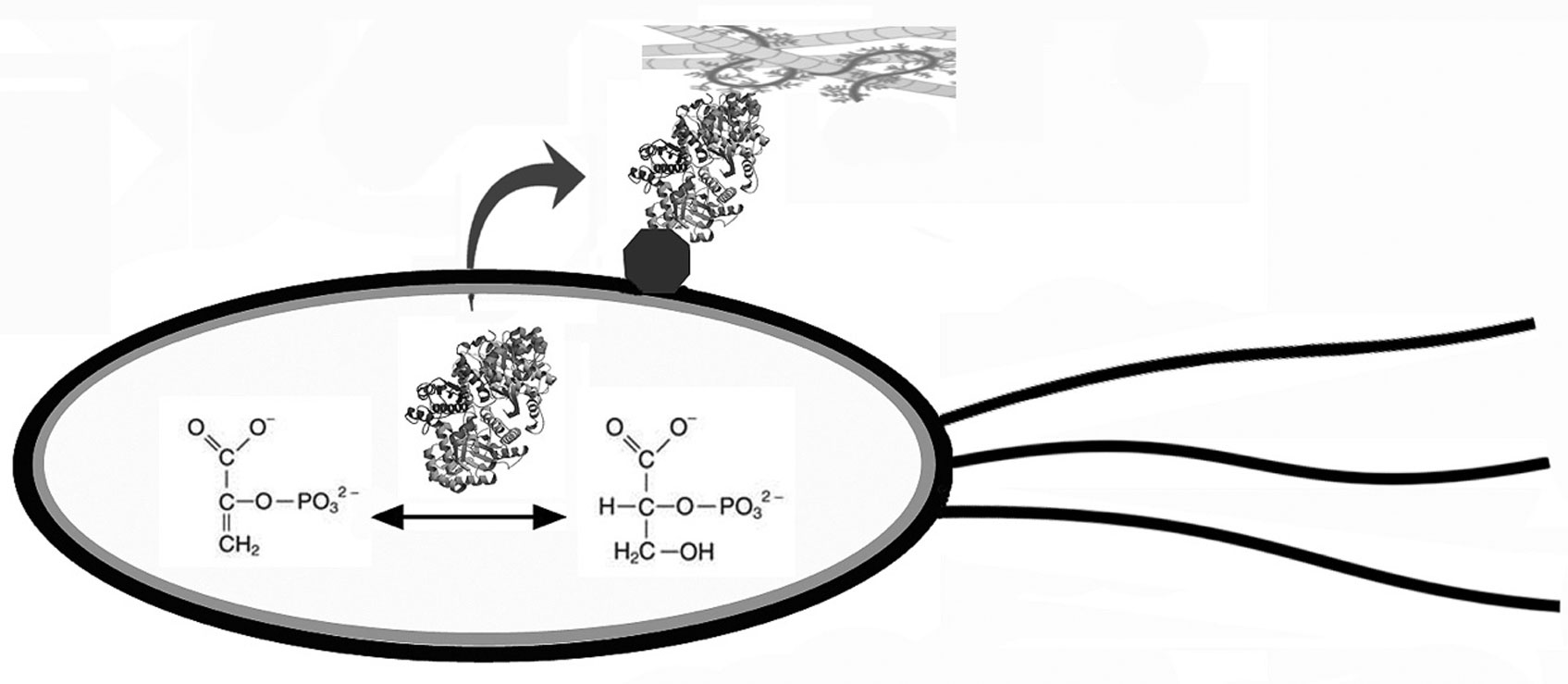
 DownLoad:
DownLoad: 

